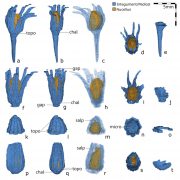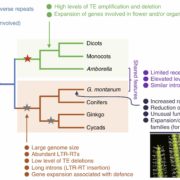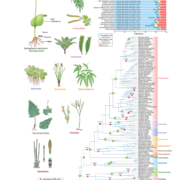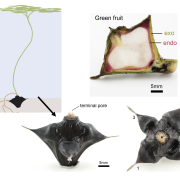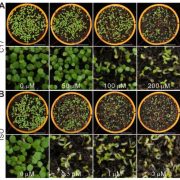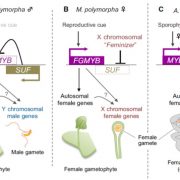Genetic contribution of paleopolyploidy to adaptive evolution in angiosperms (Mol Plant)
Genetic contribution of paleopolyploidy to adaptive evolution in angiosperms
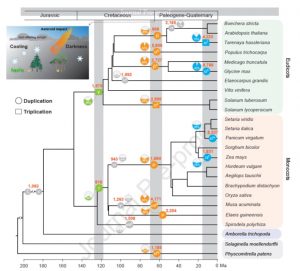 Comparative genomics has revealed that the angiosperms have experienced numerous whole-genome duplications (WGD), which have been proposed to have contributed to their global dominance. Following WGD, many of the extra gene copies are lost, but many are retained. Wu et al. explore the consequences of WGD by evaluating the gene families that have expanded following three occurrences of WGD in 25 plant genomes. They found that stress-related transcription factor families have been highly retained following WGDs, suggesting that these events have supported stress-resiliency. They also found that at the time of the Cretaceous–Paleocene (K-Pg) boundary (66 million years ago, when dinosaurs went extinct following an asteroid impact), genes involved in cold tolerance and dark tolerance were selectively retained, which is consistent with the global cooling and darkness that occurred at this time. So, the next time you’re chatting with a dinosaur-mad child, you’ve got an interesting and relevant plant story to share with them about what happened to plants after the asteroid hit. (Summary by Mary Williams) Mol. Plant 10.1016/j.molp.2019.10.012
Comparative genomics has revealed that the angiosperms have experienced numerous whole-genome duplications (WGD), which have been proposed to have contributed to their global dominance. Following WGD, many of the extra gene copies are lost, but many are retained. Wu et al. explore the consequences of WGD by evaluating the gene families that have expanded following three occurrences of WGD in 25 plant genomes. They found that stress-related transcription factor families have been highly retained following WGDs, suggesting that these events have supported stress-resiliency. They also found that at the time of the Cretaceous–Paleocene (K-Pg) boundary (66 million years ago, when dinosaurs went extinct following an asteroid impact), genes involved in cold tolerance and dark tolerance were selectively retained, which is consistent with the global cooling and darkness that occurred at this time. So, the next time you’re chatting with a dinosaur-mad child, you’ve got an interesting and relevant plant story to share with them about what happened to plants after the asteroid hit. (Summary by Mary Williams) Mol. Plant 10.1016/j.molp.2019.10.012


